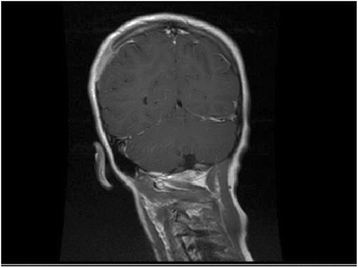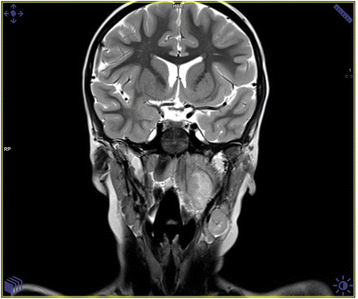The significance of Bartonella henselae bacterias for oncological diagnosis in children
- PMID: 26379764
- PMCID: PMC4568588
- DOI: 10.1186/s13027-015-0025-x
The significance of Bartonella henselae bacterias for oncological diagnosis in children
Abstract
Background: Cat-scratch disease (CSD) is a common infection in children; however, the wide spectrum of its clinical picture may lead to delayed diagnosis. An unusual presentation of CSD includes in the differential diagnosis malignant diseases, Epstein-Barr and cytomegalovirus infections, tuberculosis, and mycobacterioses. The diagnostic procedure is difficult, and it is important to consider CSD as the etiology of untypical lesion.
Patients and method: We present the analysis of 22 immunocompetent children treated with the clinical diagnosis of CSD in our hospital. Their ages were 2 to 16 years (mean 9.15 ± 2.2 years). Four of them presented classical papulas at admission time. Asymmetric, local lymphadenopathy was present in 16 patients. Five children, who presented an untypical course of CSD mimicking the oncological process, were analysed carefully. There were 3 patients with skull osteomyelitis, 1 with inflammation of the parotid gland, and 1 with an extra peripharyngeal mass. The diagnosis in these children was based on epidemiological, radiological, serological, and histological factors.
Results: About 25 % of children with bartonellosis present an untypical spectrum of symptoms, including the lack of documented cat contact, primary lesions, or peripheral lymphadenopathy. Radiological methods like USG, CT, MRI present the unspecific masses, but they are not enough to distinguish the Bartonella inflammatory and oncological process. The final diagnosis was based on a histological method with additional polymerase chain reaction test.
Conclusion: CSD should be considered in differential diagnosis of any patient with untypical lesions located on the head, neck, and upper extremities.
Keywords: Bartonella henselae; CSD; Children.
Figures





Similar articles
-
Cat scratch disease--heterogeneous in clinical presentation: five unusual cases of an infection caused by Bartonella henselae.Klin Padiatr. 2010 Mar;222(2):73-8. doi: 10.1055/s-0029-1233488. Epub 2009 Sep 29. Klin Padiatr. 2010. PMID: 19790029
-
[A negleted bacteria with a case: Bartonella henselae].Mikrobiyol Bul. 2017 Jul;51(3):286-292. doi: 10.5578/mb.57321. Mikrobiyol Bul. 2017. PMID: 28929965 Turkish.
-
Atypical presentation of cat-scratch disease in an immunocompetent child with serological and pathological evidence.Case Rep Pediatr. 2014;2014:397437. doi: 10.1155/2014/397437. Epub 2014 Dec 28. Case Rep Pediatr. 2014. PMID: 25610689 Free PMC article.
-
Cat scratch disease and acute rejection after pediatric renal transplantation.Pediatr Transplant. 2002 Aug;6(4):327-31. doi: 10.1034/j.1399-3046.2002.01091.x. Pediatr Transplant. 2002. PMID: 12234274 Review.
-
Cat-scratch disease: epidemiology, aetiology and treatment.Br J Biomed Sci. 2001;58(2):101-10. Br J Biomed Sci. 2001. PMID: 11440202 Review.
Cited by
-
Bartonella henselae vertebral osteomyelitis in a pediatric patient: A case report.Clin Case Rep. 2022 Oct 20;10(10):e6117. doi: 10.1002/ccr3.6117. eCollection 2022 Oct. Clin Case Rep. 2022. PMID: 36276906 Free PMC article.
-
Cat at home? Cat scratch disease with atypical presentations and aggressive radiological findings mimicking sarcoma, a potential diagnostic pitfall.Acta Orthop. 2021 Dec;92(6):753-759. doi: 10.1080/17453674.2021.1941624. Epub 2021 Jun 24. Acta Orthop. 2021. PMID: 34165046 Free PMC article.
-
An Atypical Case of Bartonella henselae Osteomyelitis and Hepatic Disease.Case Rep Pediatr. 2018 Apr 5;2018:2750275. doi: 10.1155/2018/2750275. eCollection 2018. Case Rep Pediatr. 2018. PMID: 29850344 Free PMC article.
-
Bartonellosis in transplant recipients: A retrospective single center experience.World J Transplant. 2021 Jun 18;11(6):244-253. doi: 10.5500/wjt.v11.i6.244. World J Transplant. 2021. PMID: 34164299 Free PMC article.
-
Skin lesions caused by Orthopoxvirus in children.Postepy Dermatol Alergol. 2020 Oct;37(5):695-699. doi: 10.5114/ada.2019.85366. Epub 2019 Aug 22. Postepy Dermatol Alergol. 2020. PMID: 33240008 Free PMC article.
References
-
- Podsiadły E, Sokołowska E, Tylewska-Wierzbanowska S. Występowanie zakażeń Bartonella henselae i Bartonella quintana w Polsce w latach 1998-2001. Przegl Epidemiol. 2002;56:399–407. - PubMed
-
- Mazur-Melewska K, Macedulski T, Prusinowska J, Mania A, Kemnitz P, Figlerowicz M et al. Różnorodność przebiegu klinicznego choroby kociego pazura. Pediat Med Rodz. 2012;8:176–9.
LinkOut - more resources
Full Text Sources
Other Literature Sources
Miscellaneous

